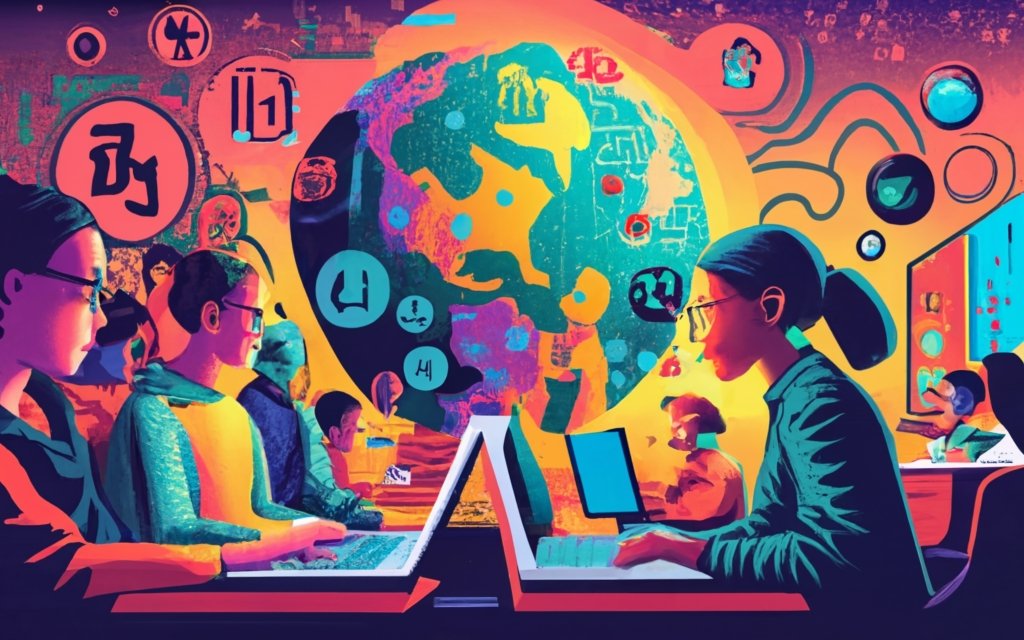In today's rapidly evolving digital landscape, the concept of the digital divide— the gap between those who have easy access to digital technology and those who do not—has become a significant concern in the education sector. Educational Technology (EdTech) plays a crucial role in addressing this divide by providing innovative solutions that enhance learning experiences, promote inclusivity, and ensure equitable access to educational resources.
Lionwood https://lionwood.software/domains/education/ a team of digital experts dedicated to creating impactful software solutions, is at the forefront of this movement, harnessing the power of technology to bridge the educational gap. This article explores how EdTech is addressing the digital divide in education and why it is essential for fostering a more equitable learning environment.
Understanding the Digital Divide
The digital divide manifests in various forms, primarily affecting low-income families, rural communities, and marginalized groups. Students in these demographics often lack access to essential resources such as high-speed internet, digital devices, and educational software, which can hinder their academic success.
According to the National Center for Education Statistics, nearly 14% of school-age children in the United States did not have access to a computer for educational purposes in 2021. This statistic highlights the pressing need for solutions that ensure all students can access the tools and resources necessary for success in an increasingly digital world.
The Role of EdTech in Bridging the Divide
1. Expanding Access to Resources
EdTech tools are designed to be accessible and user-friendly, allowing students from diverse backgrounds to engage with educational content easily. Online learning platforms, digital libraries, and interactive learning applications provide a wealth of resources that can be accessed at any time, making education more flexible and accommodating.
For example, platforms like Khan Academy and Coursera offer free or low-cost courses across various subjects, enabling students to learn at their own pace. This accessibility empowers students from underserved communities to supplement their education and gain skills that can lead to better job opportunities.
2. Enhancing Digital Literacy

To effectively navigate the digital world, students must develop strong digital literacy skills. EdTech plays a pivotal role in teaching these skills through interactive learning experiences.
Lionwood focuses on developing software solutions that incorporate digital literacy training, equipping students with the necessary competencies to succeed in today’s technology-driven environment. By integrating digital literacy into the curriculum, educators can prepare students to effectively use technology for research, communication, and problem-solving.
3. Supporting Remote Learning
The COVID-19 pandemic highlighted the importance of remote learning, exposing the vulnerabilities of students without adequate digital access. EdTech tools have made it possible for educators to continue delivering quality education, even in challenging circumstances.
Video conferencing platforms like Zoom and Google Classroom, along with collaborative tools like Slack and Trello, have transformed the educational landscape. These technologies enable teachers to create engaging and interactive remote learning experiences, ensuring that students can continue their education regardless of their location.
4. Personalizing Learning Experiences
Every student learns differently, and EdTech provides the tools needed to create personalized learning experiences tailored to individual needs. Adaptive learning technologies analyze student performance and adjust the content accordingly, allowing learners to progress at their own pace.
For instance, platforms like DreamBox and IXL use data analytics to identify learning gaps and provide targeted resources to help students improve. This level of personalization is particularly beneficial for students from disadvantaged backgrounds, as it ensures they receive the support they need to succeed academically.
Collaborating for Inclusive Solutions

1. Partnerships with Schools and Communities
To effectively address the digital divide, EdTech companies must collaborate with schools, community organizations, and government agencies. Lionwood, with its commitment to impactful software solutions, actively engages with educational institutions to develop tools that meet the specific needs of students and educators.
By fostering partnerships, EdTech companies can identify gaps in access and develop tailored solutions that promote equity. For instance, providing devices to low-income students or offering training for teachers on how to integrate technology into their classrooms can significantly impact learning outcomes.
2. Leveraging Government Initiatives
Government initiatives aimed at closing the digital divide are crucial for promoting equitable access to education. EdTech companies can align their efforts with these initiatives, creating solutions that complement existing programs.
For example, the Federal Communications Commission (FCC) has launched initiatives to expand broadband access in rural areas, while organizations like the Digital Promise have developed resources to support educators in using technology effectively. By aligning their strategies with these efforts, EdTech companies can contribute to a more inclusive educational landscape.
Conclusion
As the digital divide continues to pose challenges in education, EdTech stands as a powerful ally in creating equitable learning opportunities for all students. Through expanding access to resources, enhancing digital literacy, supporting remote learning, and personalizing educational experiences, EdTech addresses the barriers that many students face in their educational journeys.
Lionwood, with its passion for building innovative software solutions, exemplifies how technology can transform education and bridge the gap for underserved communities. By continuing to invest in EdTech, we can work towards a future where every student has the opportunity to succeed, regardless of their background or circumstances.
In conclusion, as we embrace the potential of technology, it is imperative to remain committed to closing the digital divide in education, ensuring that no student is left behind. The collaboration between EdTech companies, educators, and communities will be key in achieving this vision, paving the way for a more inclusive and equitable educational landscape.











Comments (0)